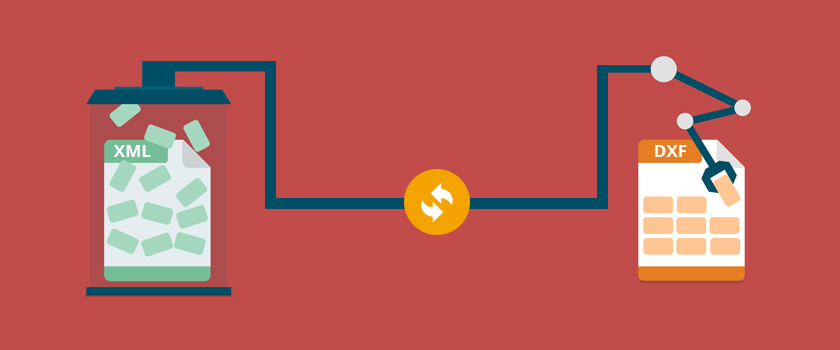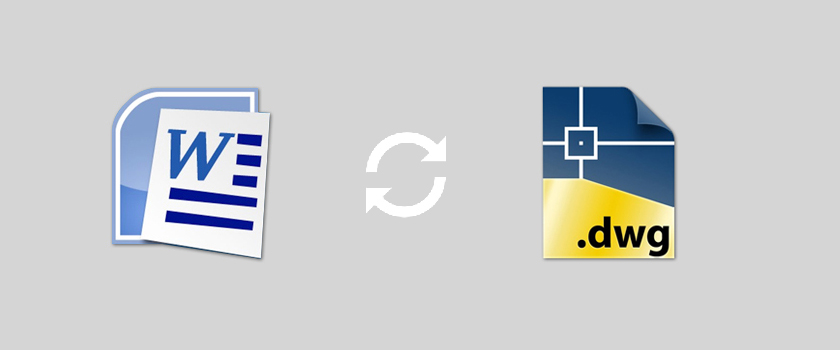The Significance of Business Translation in 2024
By: Shahzad Bashir Posted on Wed, 11-10-2023

If there was a motto that could describe the current business environment, it would include, “Going Global”. This is a method that demands a strong international expansion. Companies looking to expand internationally have to address the problem of how to conquer language barriers. The majority of companies see business translation as the most effective solution when trying to formulate an international strategy. However, few companies can facilitate growth in their markets using business translation services.
Business translation is a crucial aspect of growth globally. If done correctly it can help increase the amount of exposure and revenues globally. This guide will teach you three key strategies to help you with business translation.
Understanding Business Translation
Business translation is an approach to translating a type of text into one or more targeted languages to facilitate global business operations. Companies can either rely on internal linguists of translation businesses or employ freelance translators. The choice is based on the size of the company and structure or the market they are penetrating into. So if the aim is to target the Spanish business community, taking assistance from Spanish business translation services is a viable option.
Understanding that business translation could need multiple translators is the initial step to understanding the best way to approach it.
It might seem obvious, however, it’s easy to ignore the amount of information that needs to be translated by a firm that is looking to expand into the international market.
Let’s examine three major kinds of business translations as well as their challenges and ways to meet these challenges in the future.
1. Translating Business Documents
Do you know the hundreds of documents that make up your business’ backbone? You can think of HR manuals, corporate style guides, and operation guidelines. Before you can introduce your product/service to a country, you will need to translate them all into the local language.
Multilingual and multinational companies often have multilingual employees. It is important to ensure that all staff is on the same page regarding policies, procedures, and guidelines. Another important factor is compliance. Allowing language barriers to hinder your employees’ ability to do their jobs could quickly escalate into a legal or compliance stalemate.
Challenge: Quantity and Fragmentation
The internal business documentation can be a lot of text and needs to be managed simultaneously. This quickly becomes a large project that has many moving parts when you consider how scattered they are among multiple stakeholders around the world.
Communication can become difficult when there are multiple team members. It becomes more difficult to track who is working on which task and how it should be divided up. Problems with version control may also arise. Hence, the translation of business documents is an arduous task.
Solution: Centralization and Coordination
It is not easy to overcome the problem of translating business documents within your company.
You must first centralize all business documentation within your organization into one multilingual hub. This knowledge base can be accessed by every department. This hub should serve as both a repository that can be accessed in multiple versions and as a point of truth for all employees who require a specific piece of content in any language.
You should also establish a central business translation workflow. This will allow for the organization and management of dispersed content. It will eliminate the need for non-synchronized or non-centralized translations across teams, departments, and employees around the world.
2. Translating Technical and Legal Documentation
Texts of a technical and legal nature in different languages are one of the most difficult types of business translation. When dealing with multiple documents such as proceedings, registrations, filings, or user guides, the complexity can skyrocket. These types of text require a lot of expertise and use specific terminology.
Further complicating matters is the fact that legal and technical documentation is essential. Each document addressing legal and technical issues that you are expanding into another country must be translated fully. To preserve the accuracy and avoid any potential disputes or even fines, each document must be reviewed by an expert in the relevant field.
The technical documentation translation grouping on the other hand a wide range of scientific or technical texts, which range from user manuals, installation guides, and service guides to software strings, datasheets, and even service guides.
Challenge: Accuracy and Quality
Companies must meet very strict quality standards when it comes to legal and technical business document translation. These requirements can lead to fines, lawsuits, and public embarrassment.
This means that quality is paramount in this type of translation not only from a linguistic standpoint but also from compliance and corporate responsibility.
Each specialty in technical and legal translation has its terminology and prerequisites. Patents are an example of a highly regulated language that must be understood by subject experts.
Solution: Terminology Management and Subject Matter Expertise
Terminology validation in technical and legal translation is crucial and should be done by a team of specialized translators, legal specialists, and local market consultants. A glossary of terms should always be prepared before any translation project begins. It should include legal and technical terminology, domain-specific expressions as well as acronyms and abbreviations.
The combination of subject-matter knowledge and terminology management can make it easier to avoid costly errors or oversights in legal and technical translation projects. Although it may take time to get everyone to sign off the glossary of your organization, once it is complete, translators will be able to access the source of truth about your industry’s jargon as well as the most common terms.
You can reduce turnaround times and avoid inconsistencies between markets. Validating all product and service terminology will help you to create a cohesive product.
3. Translating Marketing Materials
Business translation involves more than just internal, legal, or technical documents. It also includes dealing with marketing content and digital resources that are designed to attract, retain, and engage an external audience.
Promo collateral cannot be translated literally because it is meant to touch people emotionally. Marketers need to communicate the message in a way that is understandable to their target audience. This process is called marketing localization.
One of the most effective translation techniques that can be used for marketing localization is transcreation–defined as the creative translation of international advertising content that ensures the tastes, wants, and attitudes of a target audience are respected and matched to equivalent cultural references.
Challenge: Global Brand Consistency
Your company’s core message should be reflected in your marketing campaigns. It can be hard to stay true to your brand identity when you try to adapt to every market.
To put it another way, if your goal is to create a strong brand identity across the globe that distinguishes your company from others and still be localized for each market, you need to find a balance between your messaging and assets.
This applies to not only copies but also images and illustrations. Every culture perceives symbols and colors differently. For instance, while most people associate red with danger or love, some cultures in the Far East considered it to be the color of prosperity and good fortune. How can you preserve your brand identity while being sensitive to cross-cultural differences?
If you think about the French business community, they have their own unique style of conducting commercial activities. To cater, one can take help from French business translation agencies.
Solution: Collaboration and Localization Management
It is important to approach the process collaboratively between translation and marketing teams. Marketers can, for example, ensure that source content doesn’t contain metaphors that are difficult to translate. They can also ensure that the content is relevant to the target language for international SEO. They can prepare content that is easy to locate.
On the other hand, translators can help marketers communicate their concepts using simpler language that is culturally appropriate. Both sides must be aware of each other’s limitations and needs so that they can work together to achieve a result that is consistent with the brand identity of the organization while being sensitive to cultural differences.
Each organization has its way of managing this collaboration. It is best to designate a localization manager who maintains a helicopter view of all aspects of the translation process. They will also make sure that the content being translated matches your brand identity and overarching localization strategy. Marketing and translation teams should have access to additional resources, such as brand and communications guidelines, content briefs, and previously approved translations to help increase consistency in marketing localization.
Now that we have discussed three different problems in business translation with their relevant results, one might wonder if there is a single solution that can overcome all these challenges mentioned above.
And the answer is YES, there is!
A Translation management system can get the job done.
Translation Management System: A One For All Solution
There is a solution to every problem, and each solution requires the right tool. A Translation Management System (TMS) allows teams to work more efficiently together when it comes to business language translation.
Cloud-based TMS powered with AI-powered technology brings together all the best business translation practices in one place.
Machine Translation Memory
Translation memory (TM), a technology that stores previously translated content, allows translators to reuse portions of it to cut costs and time. This technology allows for faster turnarounds and greater output, as well as increasing consistency across all projects.
The main advantage of MT technology is its speed. Translation of large quantities of the content does not have to be slow or labor-intensive. It is equally important to note that MT technology learns through every translation. The better the results, the more you use them.
However, the best technology for multilingual projects and global business is a combination of TM capabilities and MT capabilities. This allows you to adapt your workflow and produce the best results possible for your company.
Conclusion
In this article, we discussed the different types of translations that are done in the field of business. Moreover, we also shared some strategies that can be utilized to overcome the challenges posed by these difficult translations. Taking assistance from translation services for business documents is the best way to go about it.
On the other hand, if you ever consider starting a translation business, this article will help you understand the challenges that you would face and how to overcome them.

Africa is the second largest and second most populous continent. As recent statistics suggest, 1,486,275,887 is the current population of
Read more
dxf: DXF is a CAD data file format developed by Autodesk for CAD data exchange between AutoCAD and other software. docx:
Read more
Mars Translation can help you extract the texts in a DXF file and convert them into a XML file so
Read more
Mars Translation can help you extract the texts in a DWG file and convert them into a Word file so
Read more
No state on the western side of the globe can compare the strategic geographic location, diverse multilingual workforce, and attention
Read more
San Diego is California's second-largest city, and it has a population of 1.3 million from which three million residents are
Read more
Dallas is the largest state in Texas after Houston and San Antonio. It is the ninth most populous city in
Read more
In this day and age, users love to consume video content. Statistics show that almost 90% of all internet users
Read more
Virtual reality is transforming our imaginative worlds into existence. Since childhood, we used to create visionary kingdoms and act like
Read more